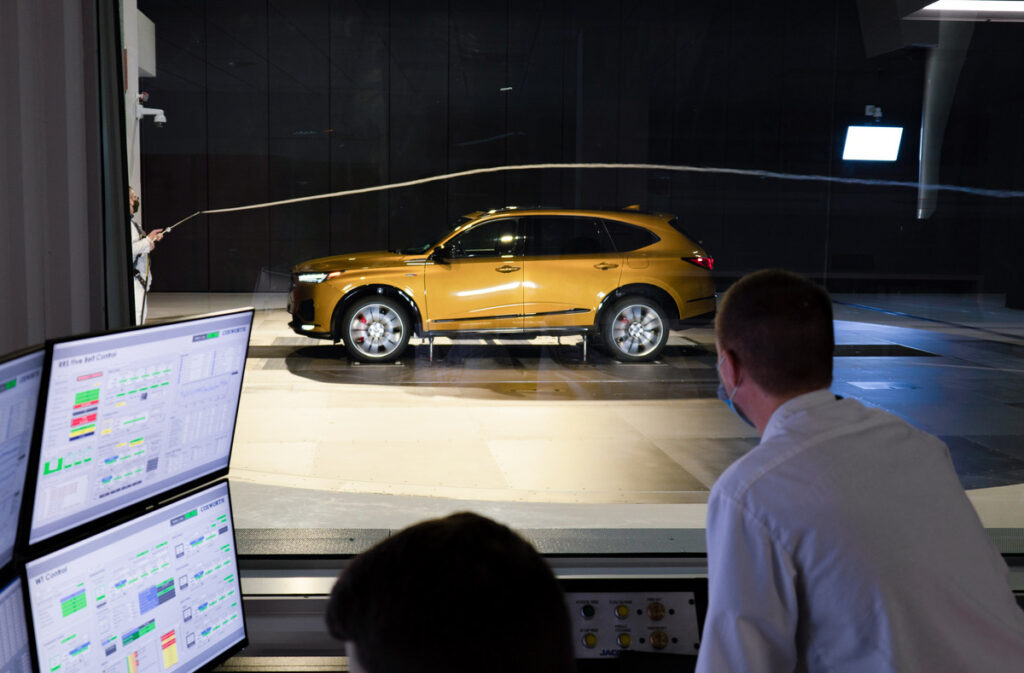New Facility To Aid in Development of Future Electric Vehicles
By Terry Troy
Honda opened its new $124 million state-of-the-art wind tunnel facility that will be used to develop future Honda and Acura products, many of which will be manufactured right here in Ohio. Since 1982, Honda of America Manufacturing has built 28.3 million cars and light trucks. Many have been manufactured and will continue to be built at its Honda’s Marysville and East Liberty plants, which employ more than 6,600 associates.
The new Honda Automotive Laboratories of Ohio (HALO) facility, located at the independent Transportation Research Center Inc. (TRC) in Central Ohio, is the world’s most advanced wind tunnel, with three separate state-of-the art testing functions — aerodynamics, aeroacoustics, and racing — in one location.
Honda created the multifunctional HALO facility to reinforce its commitment to developing fuel-efficient and fun-to-drive vehicles. One of the most advanced of its kind anywhere, the wind tunnel uses a unique interchangeable modular ground plane system capable of aerodynamic vehicle testing of production vehicles and race machines.
With a five-belt rolling road system designed for production vehicle development and a second single wide-belt system for testing both high-performance sports cars and purpose-built race vehicles, the tunnel can generate wind speeds of more than 190 miles per hour.
Even more, the wind tunnel can quickly enable a sophisticated acoustic test system for an aeroacoustic testing mode that utilizes a powerful system of acoustic arrays, made up of microphones and cameras, able to collect real-time data and precision measurement. This becomes even more important as an element of vehicle design as Honda moves toward its electrified future.

As Honda continues to move toward its electrified future, noise reduction becomes an even more important element in vehicle design. Absent engine and exhaust sounds, wind noise will be more noticeable inside the cabin of an electric vehicle. Using the acoustic test system, Honda engineers will be able to identify the precise locations of both interior and exterior noise issues more quickly than ever before.
“Honda’s product development capabilities will advance to new heights thanks to this investment in our Ohio research operations,” said Jim Keller, executive vice president of Honda Development & Manufacturing of America, LLC (HDMA), and leader of the company’s North American Auto Development Center. “With this new facility, Honda is not simply investing in an advanced technology facility but in the future of the Honda engineers and other researchers who will work here.”
The new wind tunnel, coupled with the company’s advanced safety research center, provides Honda’s R&D engineers with two world-class facilities in Ohio; both supporting the design and development of products built in America using domestic and globally sourced parts. This also is an opportunity for Honda engineers to build relationships with other companies interested in aerodynamic and aeroacoustic research, support STEM activities, and sustain the general aerodynamic community’s testing needs.
Additionally, the wind tunnel’s aerodynamic test capabilities will help increase the range and performance of the company’s future full-electric vehicles, supporting Honda’s efforts to continually advance its current position as America’s most fuel efficient and lowest CO2 full-line automaker.
The HALO wind tunnel is Honda’s latest major investment in Ohio, where the company has been advancing its ability to develop and build products for over 40 years – now totaling $14 billion.


